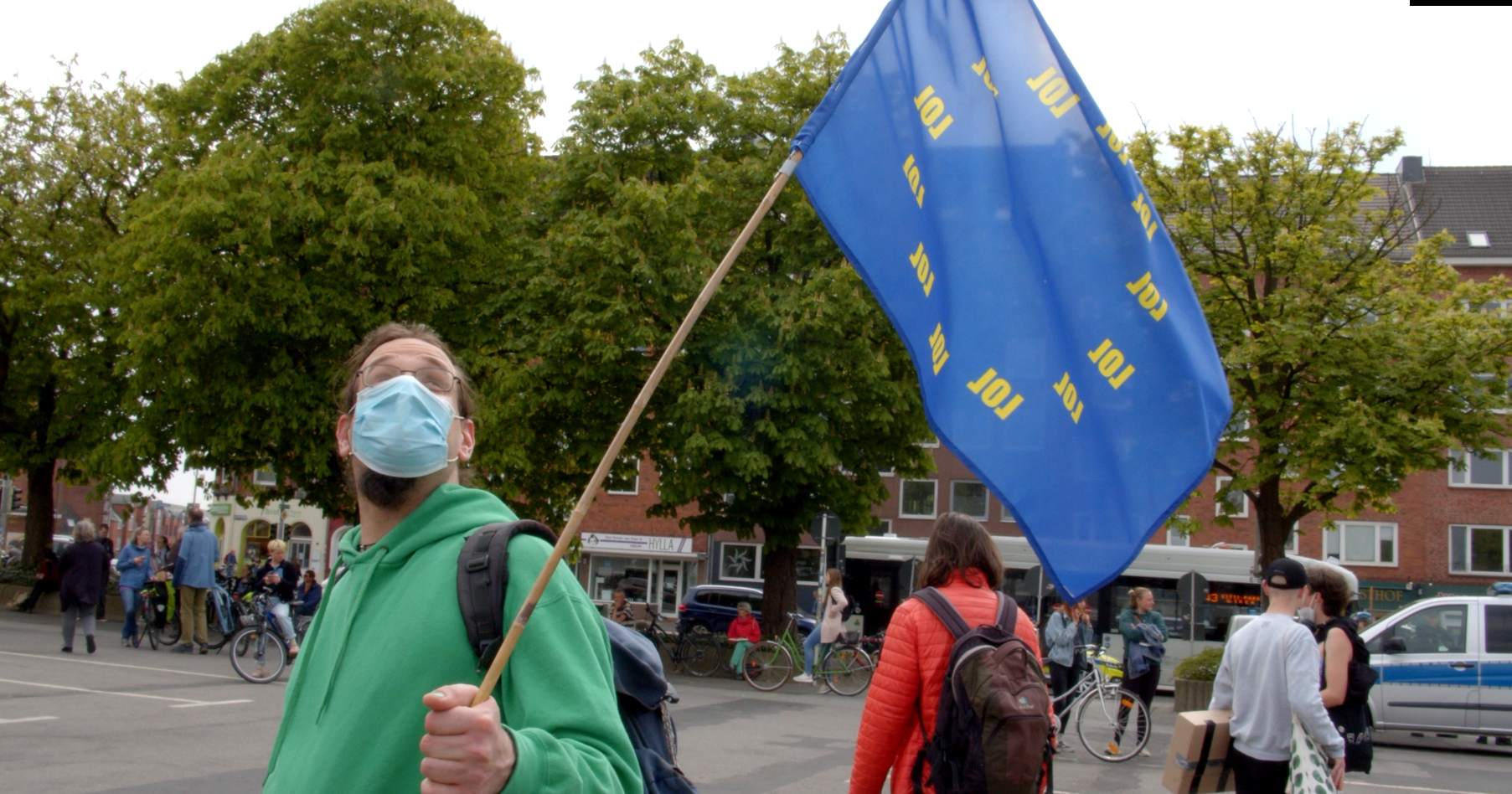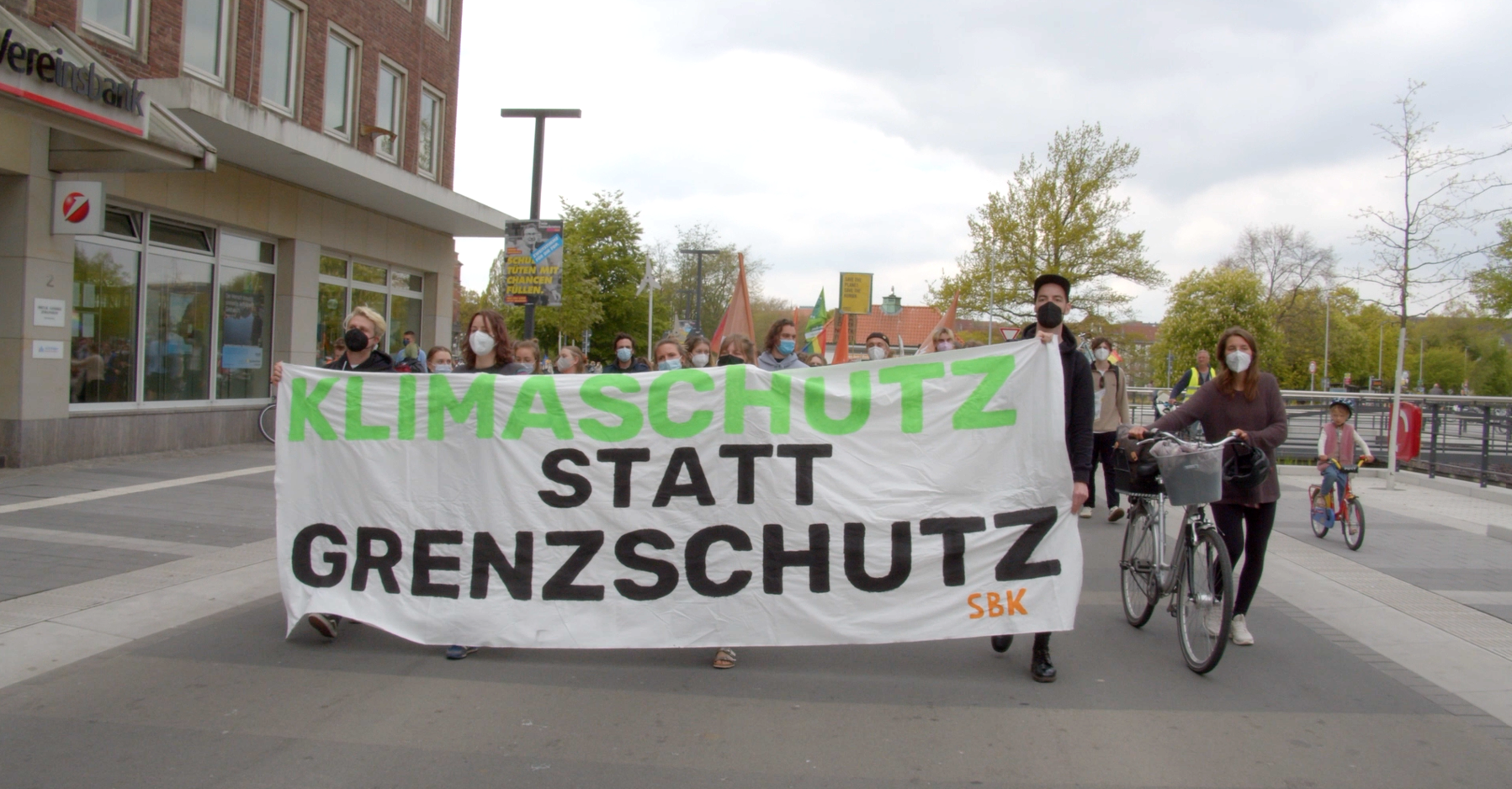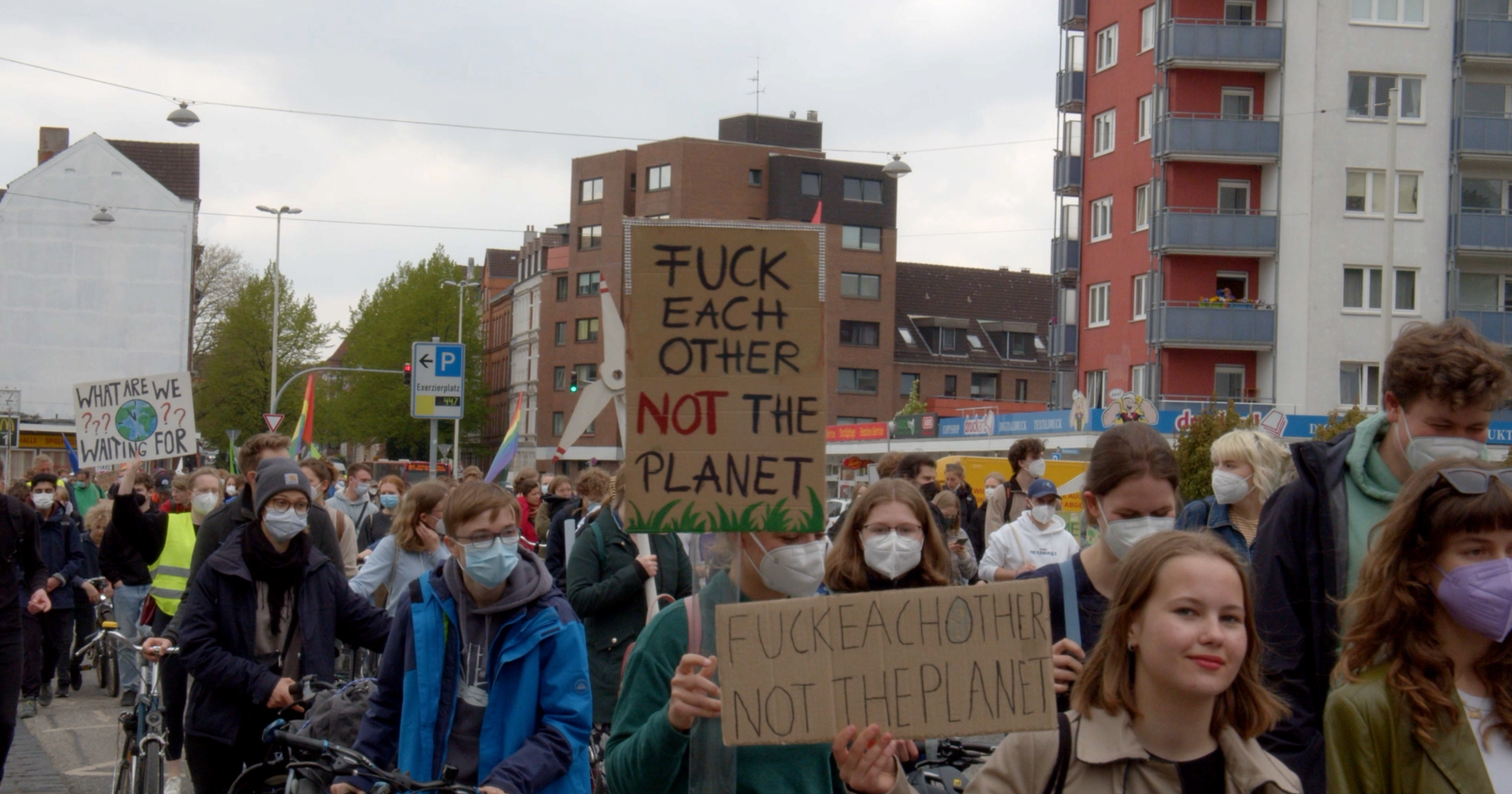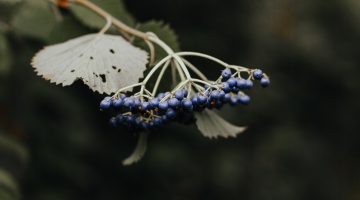Two days before the Schleswig-Holstein state election, Fridays for Future called for climate demonstrations on May 6. More than a thousand participants gathered in Kiel might just have influenced the election results.
It was just after 2 p.m. on a rather cloudy but warm Friday of May 6 at the Exerzierplatz in Kiel. Predominantly young people were gathering in front of a stage. The constant chatter was being supported by background music played by the speakers.
Every minute, even if slowly, the huge parking lot was being filled with more and more people, posters and flags. And bikes, too.
The posters read “Make love, not CO2” or “It’s so bad, even introverts are here”.
A man was holding an EU flag which, in the place of stars, had “LOL” (laughing out loud) written all over. As he said, he is a satirical party Die Partei supporter who is rather critical of the European Union.

Some people, especially girls, were wearing vintage jeans—it felt like the hippy times all over again.
One could think it’s a Pride parade—LGBTQ+ rainbow flags always surround you. But in fact, people were gathering for the Klimastreik, organized by the Fridays for Future movement. The participants had a clear message: they want more climate justice.
“It’s my seventh or eight time participating, and I come to these events because I want to be a part of change,” said Jana from Kiel, holding an LGBTQ+ flag.
Onto the stage came a few young speakers who talked not just about climate protection, but also mentioned Olaf Scholz, Daniel Günther, even socialism and anti-fascism.
Not everyone listened to the speakers. Some were mostly in their little hubs talking to each other. But when asked: “What do we want?”, in unison they loudly replied: “Climate justice!” “When do we want it?” asked multiple speakers, “Now!” chanted the crowd.
And the main part—the march—finally began at around 3 p.m. Lead by a group of small kids, the demonstrators moved from the Exerzierplatz through the city center towards the state parliament.

“State election is climate election”
This was not a typical climate strike—it happened just two days before the Schleswig-Holstein state election.
Throughout the whole of April, Kiel was full of posters promoting various political parties. Just below them on light poles were often posters inviting to come to the Klimastreik on May 6. “You have the choice” was written on one of many stickers on poles in Kiel promoting the climate strike.
As the state election on May 8 was approaching, demands for soon-to-be governors were getting louder.
“I expect a lot from politicians, because there is less and less time to be able to meet the 1.5-degree limit. It’s important for me and for us,” Jana said.
Benjamin from Laboe said he cares about the world we are going to live in. Yet when it comes to most young people, “we do not have the political power, we can only pressure the government.” And that’s what he was here for.
“I think we can make an impact on the general election in two days. I’m really hopeful,” said Benjamin.
Under the motto “#Landtagswahl ist Klimawahl” (“State election is climate election”), the Fridays for Future movement demanded that the future state governors drive the energy transition faster.
“Even if the government in Schleswig-Holstein pretends to be very progressive, it has unfortunately failed so far, even at the 2-degree target. We demand a clear change of course in climate policy from the coming government in Schleswig-Holstein!” says on the Fridays for Future web page in German.
According to Jakob Blasel, one of the organizers of the strike, this is one of the most crucial government formations ever for the climate.
“I think such events like Klimastreik are really important. We want politicians to hear us, and it’s a good opportunity for that. We need to put more pressure,” said Jakob.

Not too many Ukrainian flags
As the demonstrators were moving through the city center, they had to give way to some ambulance cars a few times. But that wasn’t a problem, even for a crowd like this. People managed to open an emergency lane within just a few seconds.
You might expect there to have been thousands and thousands of people. Yet, according to Fridays for Future, it was approximately 1500, while the police spoke of 700 to 800 participants—significantly less than expected.
Flags were waving, posters were being lifted, music was playing, chants were being chanted. Yet there seemed to be little attention paid to the war in Ukraine despite the importance of the topic in the previous climate strike in March. Only a few posters were saying “stop war”.
“I think it’s a bit strange that there aren’t so many Ukrainian flags, I guess people are taking the war in Ukraine as a new status-quo and are not invested as much,” said Jakob.
The demonstration ended with a live music concert near the Krusenkoppel.

The demonstration worked?
It seems that at least partly, the climate strike worked—the Greens surpassed the Social Democrats in the state election to win the second place. In fact, the only two constituencies in Schleswig-Holstein where the “Grüne” won were in Kiel.
And now, coalition talks with CDU (Christian Democratic Union) in Schleswig-Holstein seem to be going in the Greens’ favor.
On the same day, climate strikes happened not just in Schleswig-Holstein, but also in western German cities like Cologne, Dortmund and Düsseldorf.
Fridays for Future demonstrations started in August of 2018, when Swede Greta Thunberg began going on strike at school. Now it’s an international event happening regularly all over the world.
![FHews – [ fju:s]](http://fhews.de/wp-content/uploads/2015/05/fhews_logo2_3B8ACC.jpg)









No Comment